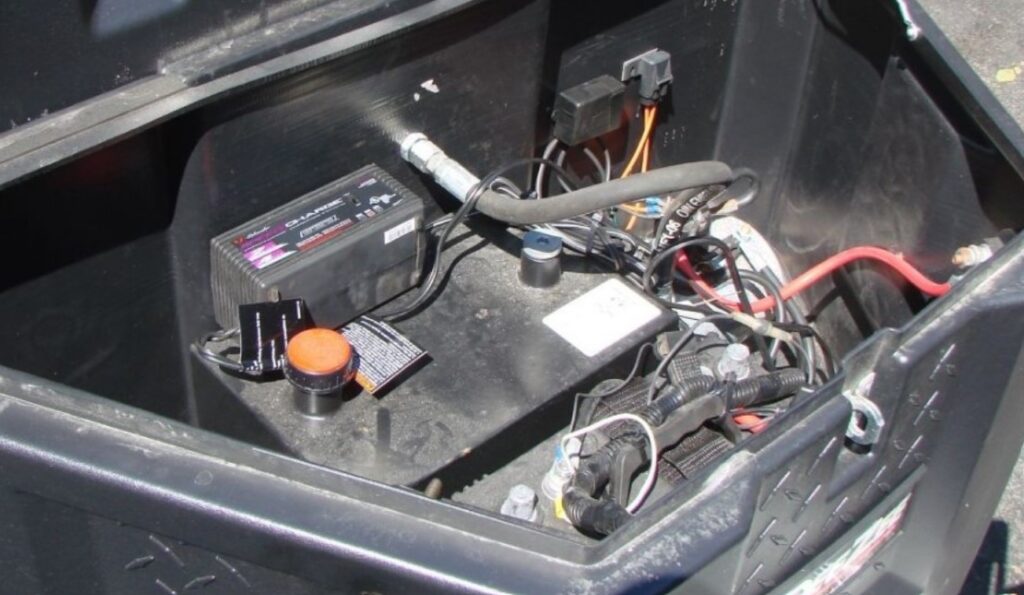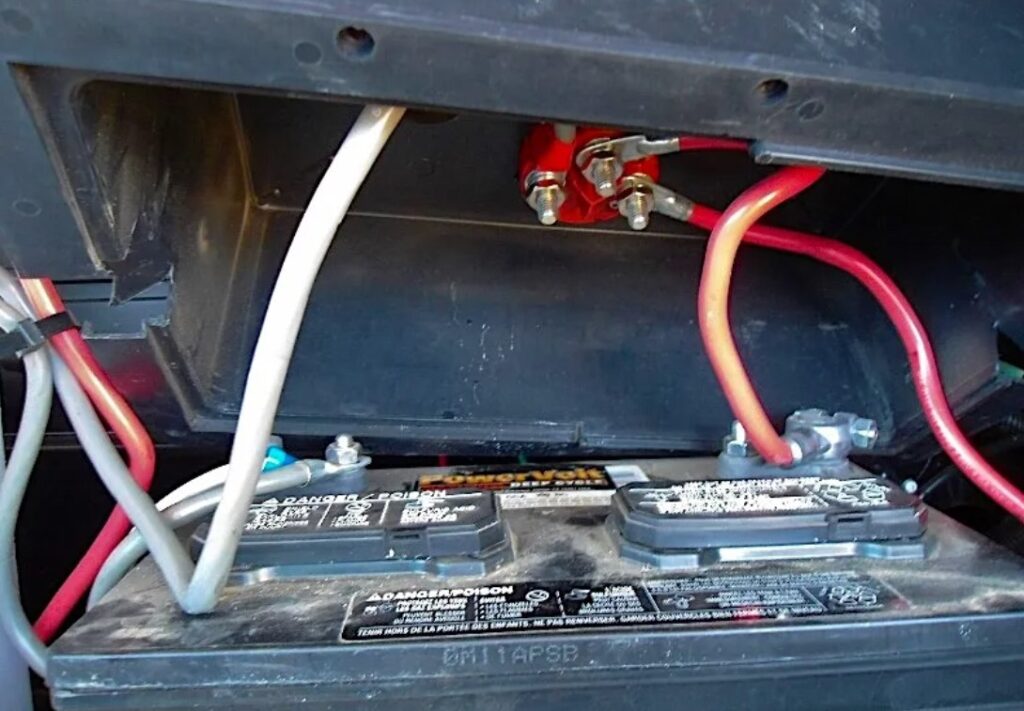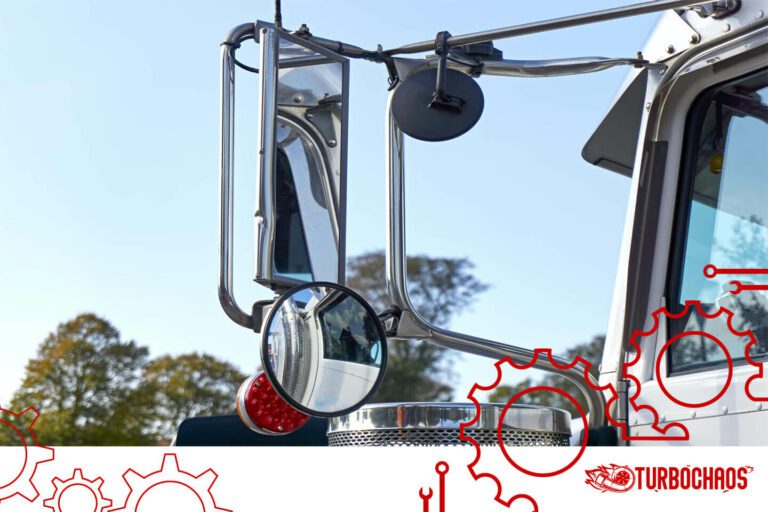How To Charge A Battery On A Trailer From Truck? Explained
This article aims to provide information on How To Charge A Battery On A Trailer From Truck? Charging a battery on a trailer from a truck is a practical and necessary task for many travelers and truck drivers. It ensures that your trailer’s battery is always powered, especially for systems like lights, brakes, and refrigerators.
Key Takeaways
- Understand the connection process between the truck and trailer.
- Safety precautions during the charging process.
- Tools and equipment needed.
- Steps for successful charging.
- Troubleshooting common issues.
How To Charge A Battery On A Trailer From Truck?
Charging a battery on a trailer from a truck is a straightforward process that involves using the truck’s electrical system to replenish the battery on the trailer. Here’s a detailed breakdown of the steps involved:

Step 1: Check Compatibility and Equipment
Firstly, ensure that your truck is equipped with an electrical system capable of charging a trailer battery. Most modern trucks with a towing package have this capability. You’ll typically need a 7-way connector, which is standard for such setups and includes a charging line.
Step 2: Inspect the Batteries and Connectors
Before beginning, inspect both the truck and trailer batteries. Ensure they are in good condition, with no visible damage or corrosion. Also, check the connectors and cables for any signs of wear or damage.
Step 3: Establish the Connection
Connect the truck to the trailer using the appropriate connector. For most modern systems, this will be the 7-way connector. This connector should be located near the hitch of the truck. Ensure the connection is secure and that there are no loose ends.
Step 4: Start the Truck’s Engine
With the connection secure, start the truck’s engine. This action will activate the truck’s alternator, which in turn provides power to charge the trailer’s battery.
Step 5: Monitor the Charging Process
While the engine is running, the trailer battery will begin to charge. It’s a good idea to monitor the charging process if you have a way to do so, such as a battery monitor or a voltmeter. This will help you understand how quickly the battery is charging and when it might be fully charged.
Step 6: Check the Trailer Battery
Periodically check the trailer battery to ensure it’s charging properly. A fully charged battery typically has a voltage of around 12.6 volts or more. However, this can vary based on the type of battery.
Step 7: Disconnect Once Charged
Once the battery is charged, turn off the truck’s engine before disconnecting the connector. This helps prevent any electrical surges or damage to the electrical systems of either the truck or the trailer.
Step 8: Regular Maintenance
To ensure a smooth charging process in the future, regularly maintain both the truck and trailer’s electrical systems. This includes checking the condition of the batteries, ensuring connections are clean, and inspecting cables and connectors for wear.
Safety Measures
Safety is paramount when dealing with electrical systems. Always turn off the engine and disconnect the truck’s battery before making any connections. Use insulated tools and wear protective gear.
Understanding Electrical Systems
Be aware of the electrical requirements of both the truck and trailer. Overloading the system can cause damage. Consult your vehicle’s manual for specific guidelines.
Regular Maintenance
Regular checks on both the truck and trailer’s electrical systems can prevent issues. This includes inspecting cables, and connectors, and ensuring the battery terminals are clean and free from corrosion.
Tools and Equipment Needed
A successful charging process requires the right tools. You will need a compatible connector, usually a 7-way plug. A voltmeter for checking the battery voltage is also essential. Keep electrical tape and basic tools like pliers and screwdrivers handy.

Choosing the Right Connector
The connector type depends on your truck and trailer model. Most modern setups use a 7-way connector. Ensure the connector is compatible and in good condition.
Importance of a Voltmeter
A voltmeter helps in ensuring that the battery voltages are suitable for charging. It avoids the risk of overcharging or undercharging.
Troubleshooting Common Issues
Sometimes, you might encounter issues while charging. Common problems include the trailer battery not charging or the truck’s alternator being unable to handle the load.
Identifying the Problem
Use a voltmeter to check the voltage levels. Inspect the connectors and cables for any damage or loose connections.
Solving Electrical Issues
Replace any damaged cables or connectors. If the truck’s alternator is not sufficient, consider upgrading it or using a separate battery charger for the trailer.
How Do You Charge A Dead Trailer Battery?
Charging a dead trailer battery can be done using a few methods, the most common being through your towing vehicle or by using a dedicated battery charger.
To charge from a vehicle, connect the trailer’s electrical system to the vehicle using the appropriate connector (usually a 7-way connector for newer models). This setup allows the vehicle’s alternator to charge the trailer battery while the engine is running.

However, if the battery is completely dead, it may require a more direct charging method. Using a dedicated battery charger, connect the charger’s positive lead to the battery’s positive terminal and the negative lead to the battery’s negative terminal.
Set the charger to the correct voltage (typically 12V for trailer batteries) and amperage, then start the charger. Monitor the charging process and disconnect once the battery is fully charged.
How Do You Hook Up A Battery Charger To A Trailer Battery?
Hooking up a battery charger to a trailer battery is a straightforward process. First, ensure that the charger is suitable for your battery type (lead-acid, AGM, etc.).
Turn off all power sources and disconnect any loads from the battery. Connect the positive (red) lead of the charger to the positive terminal of the battery and the negative (black) lead to the negative terminal.
Once connected, set the charger to the correct settings for your battery type and capacity. Turn on the charger and monitor the charging process. It’s important to ensure that the connections are secure and that the charger is placed in a stable position away from flammable materials.
Does A 4 Pin Trailer Plug Charge Battery?
A 4-pin trailer plug is typically used for basic lighting functions and does not provide a charging function for the trailer battery. The 4-pin connector includes pins for left turn signal/brake light, right turn signal/brake light, tail lights, and ground. To charge a trailer battery, a 7-pin connector is usually required, as it has additional pins for battery charging and auxiliary power.

How To Charge A Trailer Battery While Driving?
To charge a trailer battery while driving, you must have a towing vehicle equipped with an appropriate electrical system, typically a 7-way connector. This connector allows the vehicle’s alternator to charge the trailer battery while you drive. Here’s how to do it:
- Connect the 7-way plug from the truck to the trailer. This plug includes a pin for power, which will charge the battery.
- Start the vehicle’s engine. The alternator will now provide power to both the vehicle and the trailer battery.
- Monitor the battery’s voltage if possible to ensure it’s charging.
- Drive as usual. The battery will charge as long as the engine is running and the connection is secure.
This method is efficient and convenient as it charges the battery without needing an external power source.
Conclusion
Charging a trailer battery from a truck is a straightforward process, vital for maintaining the functionality of your trailer. By following these steps and maintaining safety, you can ensure a successful and efficient charging process. Remember, the key to successful charging lies in understanding your vehicle’s electrical system and taking the necessary precautions.
Top FAQ’s
How can I ensure my trailer battery maintains charge for longer periods?
Regular maintenance, including cleaning terminals and checking for corrosion, helps. Also, consider using a battery maintainer when the trailer is not in use for extended periods. Ensure the battery is fully charged before storage.
Do I need any special tools to charge my trailer battery from a truck?
Basic tools required include a compatible connector (like a 7-way plug), a voltmeter to check voltages and standard tools like pliers and screwdrivers for secure connections.
Is it possible to overcharge my trailer battery?
Overcharging is a risk, especially if left connected for too long. To prevent this, regularly check the battery’s voltage and disconnect once fully charged. Some modern trailers have built-in systems to prevent overcharging.
What should I do if the trailer battery isn’t charging?
Check the connections for any loose or damaged parts. Use a voltmeter to check the voltage at both the truck and trailer battery. If everything seems fine but charging still doesn’t occur, consult a professional for a detailed inspection.

Welcome to the exhilarating world of Matt Rex, a professional car racer turned renowned vehicle enthusiast. Immerse yourself in his captivating blog as he shares heart-pounding adventures, expert reviews, and valuable insights on cars, trucks, jets, and more. Fuel your passion for speed and discover the beauty of vehicles through Matt’s engaging stories and meticulous expertise. Join the ever-growing community of enthusiasts who find inspiration and expert advice in Matt Rex’s blog—a digital hub where the thrill of speed meets the pursuit of knowledge.







